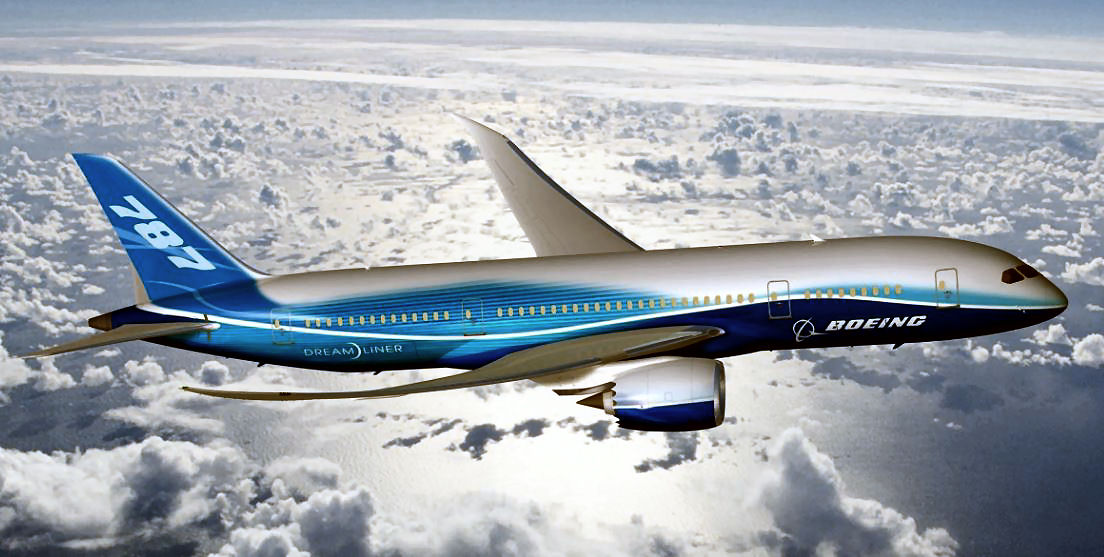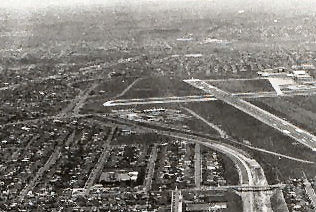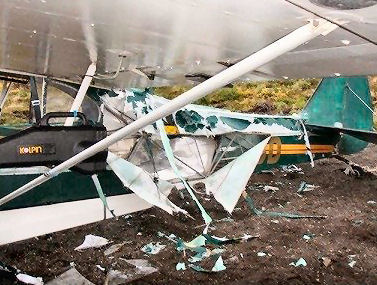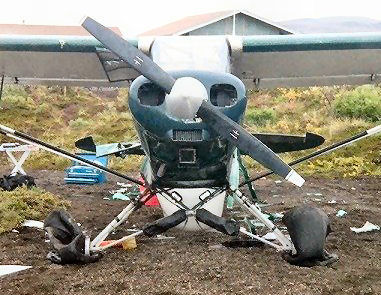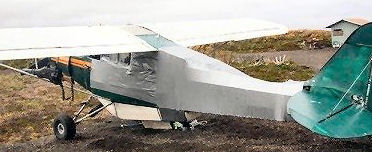|
|
|
|
Radschool Association Magazine - Vol 42 Page 12 |
|
|
Privacy Policy | Editorial Policy | Profit Policy | Join the Association | List of Members | Contact us | Index | Links |
|
|
Back Go to page: 1 2 3 4 5 6 7 8 9 10 11 12 13 14 15 16 17 18 19 20 Forward |
|
|
|
|
|
Boeing 787
In the Boeing 787 Dreamliner's first year of service, at least four aircraft suffered from electrical system problems stemming from its lithium-ion batteries. Although teething problems are common within the first year of a new aircraft design's life, after a number of incidents including an electrical fire aboard an All Nippon Airways 787 and a similar fire found by maintenance workers on a landed Japan Airlines 787 at Boston's International Airport, the United States Federal Aviation Administration (FAA) ordered a review into the design and manufacture of the aircraft.
This was followed with a full grounding of the entire Boeing 787 fleet, the first such grounding since DC-10s were grounded following the American Airlines disaster in 1979. It is reported that the 787 has had two major and dangerous battery thermal runaway events in 100,000 flight hours, which massively exceeds the 10 million flight hours predicted by Boeing.
This put Boeing and all airlines that do or intend to fly the 787 in
a real spin. Boeing’s techs burnt the midnight oil for days and
eventually come up with a plan. Working with battery experts, they proposed a comprehensive set of solutions to fix the problem.
First, they made some changes to the battery itself which will
prevent any faults from
Charred battery from the All Nippon 787.
The FAA were so impressed with Boeing’s plans they gave permission for Boeing to begin flight test activities on two aircraft to demonstrate that the solutions work.
To us it seems it’s a bit of 2 bob each way “It’s fixed, it will never happen again – but if it does…..”
Boeing completed a 787 certification demonstration flight on the 5th April which was the final certification test for the new battery system. The purpose of the flight was to demonstrate that the new battery system performed as intended during normal and non-normal flight conditions and the crew reported that the flight was uneventful.
Boeing will now gather and analyse the data and submit the required material to the FAA. The 787 should get a clean bill of health and be in the air again soon.
|
|
|
A good way to get smarter is by degrees.
|
|
|
Propeller separation
Propeller and/or engine separation from an aircraft in flight is a rare and unusual occurrence – thank goodness. An ANA DC-2, VH-USY, had its shut down right engine drop off whilst about to land at Nhill, Victoria in 1940, luckily with no casualties. The engine mounts had failed following an in-flight engine fire.
In 1964, a DC-6B lost a propeller while taking off from Essendon airport, once again, luckily with no casualties.
Here is the story.
Cyril Keith Hants was born at Warracknabeal, Victoria in 1924 and then educated at Mont Albert Central School, Melbourne. In 1942 at age 18 years, Keith volunteered for RAAF aircrew and after acceptance began pilot training at Western Junction, Launceston’s airport, where he completed his first solo in a Tiger Moth.
The following year at age 19 he was awarded his pilot wings brevet at Point Cook after qualifying on the Airspeed Oxford multi-engined trainer. He was posted to England to fly bombers, first Wellingtons and then Lancasters.
After the war, (in mid-1946) Keith, at age 22, returned to Australia for demobilisation. He joined Australian National Airways in 1947 as a First Officer on DC-3 aircraft based at Melbourne’s Essendon Airport. Subsequent advancement saw him flying DC-4 and DC-6 aircraft before returning to fly the DC-3 as a check captain. On 3rd October 1957 A.N.A. was taken over by the much smaller Ansett Airways and Keith was now flying with the new combined airline, Ansett-ANA.
Mostly uneventful airline route flying followed until that fateful day in April 1964, when Keith was pilot in command of a 4 engined Douglas DC-6B scheduled to operate a flight from Melbourne’s Essendon Airport to Adelaide and Perth. Just after midday on Tuesday the 14th April, just after take-off and at about 200 feet altitude, the aircraft lost the complete propeller assembly from N° 3 engine. Initially one blade separated due to fatigue fracture, with the other two blades wrenching themselves off soon afterwards still attached to the hub. Due to the massive torque loads generated by this event, the engine, weighing just over a ton, almost wrenched itself off its mountings but remained hanging down at a steep angle, lower than the main undercarriage would be when extended. All this caused a severe directional disturbance, much aerodynamic drag and a major power loss, all requiring immediate action.
A considerable quantity of oil was being lost from the No. 3 engine
area due no doubt to oil tanks and lines being ruptured and some had
sprayed on the side of the fuselage and windows. The propeller
debris dropped onto the suburb of North Essendon, fortunately
causing no loss of life or injury. The first blade punctured the
roof of a private home whilst the other two blades and propeller
dome landed as one unit in the backyard of another house. This 3-
Keith Hants in an Ansett-ANA DC-6B
At the time there were 64 people on board plus luggage, mail and freight. Keith Hants advised Essendon tower that a major part of N° 3 engine had dislodged and a large part of the propeller had landed somewhere in North Essendon. The resulting out-of-balance forces had left the engine barely hanging below the wing, creating considerable aerodynamic drag with marked reduction in aircraft performance. The big Douglas struggled to gain enough height to safely clear the built up areas whilst maintaining approximate runway heading taking it over the mouth of the Yarra River and out over Port Phillip Bay.
The DC-6B flight manual states that the power-on stall-speed at the aircraft’s estimated weight at the time would be just over 100 knots and that the probable climb rate available (up to 1500 feet) in this unique condition was about 100 feet per minute at a cruise-climb airspeed of about 140 knots. This was, in reality, the best performance that could be obtained given the dire situation the aircraft was in. A clockwise circular flight pattern over the bay of about 30 kilometres in diameter was then taken up embracing points abeam Williamstown, Dromana, Mud Island and Point Cook. This was to consume and dump fuel to reduce the aircraft’s weight before attempting the planned emergency landing back at Essendon or to prepare for a possible ditching in the event of further complications. |
|
|
Fortunately being an autumn weekday, the number of pleasure
watercraft on the bay was minimal and the crew began jettisoning
fuel. A DC-3
then
took-off from Essendon, with certain D.C.A. experts and Ansett-ANA
Remains of Number 3 propeller hub following its recovery.
It was decided that the engine should be dislodged as soon as possible as it would be too dangerous to attempt to land with the damaged engine still attached so precariously. After much manoeuvring, shallow dives and sharp pull-ups, making the cabin occupants decidedly uncomfortable, the engine finally dropped off into Port Phillip Bay in about 12 metres of water some 5 kilometres east of Point Cook. This position was noted by ATC radar and then located and marked with buoys by a Point Cook-based RAAF crash launch.
The aircraft then returned to Essendon Airport and landed safely exactly one hour and thirty four minutes after take-off.
|
|
|
A
huge crowd of onlookers including press, airline, Department of
Civil Aviation and emergency personnel and
Reg Ansett himself came out to see the fortunate conclusion to the 94-minute air drama over Melbourne, and congratulated all crewmembers on a sterling effort.
The craft was then towed back to the hangar for inspection and fitted with a new No. 3 engine and propeller overnight. Following satisfactory checks, it was soon back in revenue service. Subsequent investigations found that one blade of the failed No. 3 propeller had suffered a catastrophic fracture some 21 centimetres from the blade root, caused by a metal fatigue crack originating from a point beneath the de-icer boot. The reason for the crack occurring was that a small portion of the blade surface in that area had been subjected to unplanned heating in excess of 500 degrees centigrade several thousand flight hours prior to the incident.
It
was considered that the most likely source of this heating would
have been from an electrical breakdown or short in
The particular propeller at the No. 3 engine position at the time of the incident was a certified overhauled and fully airworthy component drawn from the Ansett-ANA spares inventory and was fitted prior to the aircraft entering Australian RPT service.
Front view of the Number 3 engine in the hangar at Essendon Airport, following its recovery from Port Phillip Bay.
The aircraft’s last Ansett-ANA revenue service operated on 29th May 1966, after which it was withdrawn from service and placed in open storage in the “graveyard” at Essendon Airport until being sold to Taiwan in March 1967. This grand old propliner’s last known activity was as a firebomber in Canada commencing in the early seventies.
For his exemplary airmanship and skilful handling of a most difficult and unique hazard to life and limb as experienced by his passenger-laden DC-6B aircraft, Captain Hants was awarded the Queens Commendation for Valuable Service in the Air by the Governor of Victoria on 18th June 1964. Keith continued domestic airline flying with Ansett-ANA, serving a total of 26 years, achieving the senior rank of Flight Captain Viscount and then Flight Captain Electra, until medical problems ended his flying career in 1973. For twenty years from 1974, he operated a ground simulator school at Essendon Airport until he retired in 1994 at age 70.
View of the Number 3 engine bay showing remains of engine mount and oil tank.
In 1963 new DC-6Bs were no longer available as the type had ceased production five years earlier. When it arrived at Ansett-ANA’s Essendon Airport workshops it was given a full Australian Certificate of Airworthiness check and fitted with four newly overhauled engines and propellers.
From the 28th to the 31st December 1965, it was chartered by the RAAF flying from Pearce to Butterworth.
One of Uncle Reg’s blue eyed girls on the plane that day was Judy Murphy. She later wrote:
“At 12.30 pm we boarded our DC6B aircraft VH-INA to prepare the cabin and buffet for our luncheon flight back to Adelaide. We had fifty-seven passengers on the flight, made up of approximately twenty First Class and the remainder Economy Class.
Our passengers boarded, were equipped with reading matter, and Margaret (another Hostess) and I then sat down for take-off. We had only been air-borne for about two minutes when the aircraft shook violently and gave a severe lurch. The sensation was similar to a car hitting a deep ditch. Immediately, I saw the starboard side windows being doused with thick, black oil; not waiting for any 'six bells', I headed for the cockpit.
Another view of the Number 3 engine bay showing remains of engine mount and oil tank.
The crew were all working like one-armed paper hangers. Captain Keith Hants was on the radio, F/O Bob Gordon endeavouring to maintain a steady hold on the aircraft, and F/E Bert Clarke had his instrument panel lit up like a Christmas tree. Keith told me to get on the PA and inform the passengers that we had an emergency, to continue to observe the No Smoking and Fasten Seat Belt signs, and that he would speak to them in a few minutes time after he had discussed our situation with Ground Control.
Our situation basically was this. On take-off the propeller on the No. 3 engine had split and flown off, dragging the engine out of its mountings. The engine was left dangling down in front of the wing. The propeller (now in several pieces) and parts of the engine, landed in back yards in Essendon; luckily no one on the ground was injured.
We flew out over Port Phillip Bay where Keith dumped most of our fuel and we circled around the bay area so that if the engine did drop off, at least it would fall in a safe place! |
|
|
|
|
|
In the cabin there was no real panic among our passengers, although it would be fair to say many were obviously frightened over our predicament. One lady started to cry rather loudly, but her husband gave her a quick backhander and she was then content to just whimper quietly for the next hour. Another passenger indicated that he felt that there was no excuse for us not to proceed with serving bar and lunch, and yet another settled down to write out his will!
After we had been airborne for forty minutes, a DC3 containing Captain Peter Gibbes and DCA officials flew alongside our aircraft inspecting the damage with binoculars. It was an incredible sight, seeing the other aircraft flying so close to ours; we could clearly see the people on board the DC3, and it gave one a rather warm feeling to know that these and many other people on the ground were really concerned about our safety, and were trying to help us in every possible way.
The decision was made, that any attempt to land whilst the engine
was still hanging down lower than the undercarriage would be fatal.
The fire risk alone was tremendous. Somehow we had to get rid of the
offending engine. To this end, Keith commenced a 'shallow dive—sharp
pull out' procedure to try to shake the engine off. These manoeuvres
felt quite violent in the cabin, particularly as Margaret and I were
at this stage, demonstrating the ditching position to our
passengers. The increased G-force caused by the above manoeuvre had
us on the floor several times.
We were flying at about 1400 feet, and running very low on fuel when we finally rid ourselves of the engine. We headed straight back to Essendon. Full scale emergency units were on hand at the airport, but thanks to Keith's skill, which was wonderfully supported by Bob and Bert, we made a smooth, safe landing. We had been in the air just under two hours.
Several amusing incidents came out of the above story. One of our passengers was a Dutch lady, who had just arrived in the country and spoke no English at all. We had not been informed of this prior to the flight, and I did not become aware of the problem. When I spoke to her regarding emergency procedures and ditching position, she smiled and nodded her head as if she understood me perfectly.
After our arrival back at Essendon, she was taken in hand by an interpreter who asked her if she was all right. She replied that she was fine; that she had had a lovely flight, and that she couldn't get over how much Adelaide Airport looked the same as Melbourne Airport! She had no idea that she was back where she had started from. She had not understood one word said by the crew during the flight; she had not realised that anything was amiss. Innocence was bliss! She did go on to say however, that she did think that we Australians were rather funny the way we sat for landing! No doubt the dear lady was quite surprised to find out later, when she flew on to Adelaide, that it is not normal practice to take up full brace position for every landing!
It was also reported that when the news of the emergency was heard at Swanston Street, Miss Kit Dark, our Hostess Superintendent, immediately jumped into her car and headed for the Airport. As she approached Essendon she was confronted by the police road blocks which were only permitting fire engines, ambulances and other authorised people through. The officer on the road block was really doing his job well, and there was no way that he was going to let her pass.
Miss Dark was adamant that she was going to get through; she informed him that she was the Hostess Superintendent and therefore entitled to pass. To this the officer supposedly replied, 'Yeah, and I'm Mother Goose'. I'm pleased to say that right won out, and Miss dark was there to meet Margaret and I when we landed. |
|
|
While
our drama was going on, the Airport was completely closed to all
traffic. Meanwhile, an Electra was flying to Melbourne from Sydney.
The Captain was not aware of the situation at Essendon and was
starting to build up his
One small point, which I would also like to relate concerning this incident, is about the emergency drill. We all waded through our manuals religiously whenever we had a check coming up, and mostly ignored them for the rest of the time. However, the moment that the propeller parted company with the engine and the oil started to spray, it was as if someone had opened the manual at the DC6B Emergency Procedures page in front of my eyes, and it was all there for total recall. It proved to me, that if something important is learnt, it may lie dormant in a back corner of the brain for quite a long time, but it will jump forward when needed.
Our passengers were a great group of people that day; not once did anyone question our instructions to them, and two gentlemen with World War II RAAF experience offered to assist in the cockpit if needed. After the successful landing was completed the whole cabin broke into warm, spontaneous applause. I don't know to this day whether or not the crew in the cockpit heard it, but I hope they did. They deserved it!”
|
|
|
|
|
|
If cockroaches can survive nuclear bombs and chemical warfare.......what the hell is in a can of Raid???
|
|
|
|
|
|
Another Ripley story.
During a private fly-in fishing excursion into the Alaskan wilderness, The charter pilot and fishermen left a cooler with bait in the plane. A bear smelled it. This is what it did to the plane... |
|
|
|
|
|
The pilot used his radio (which wouldn't have worked if there were no radtechs) and had another pilot bring him two new tires, three cases of duct tape, and a supply of sheet plastic. He then patched the plane together, and........ FLEW IT HOME!
Duct tape. Never leave home without it... |
|
|
|
|
|
|
|
|
HITLER'S AIRCRAFT CARRIER
The German Kreigsmarine never really embraced the use of aircraft carriers in WW2. Hitler showed little interest in this type of Naval vessel and its operation. The chief of the Luftwaffe, Herman Goering, was always jealous of his command over all forms of aircraft and did all in his considerable power to stymie Admiral Reader's plan to build up to four aircraft carriers.
In 1935, Hitler announced a plan for the Navy to acquire aircraft carriers. Two keels were laid down in 1936, and in 1938, Grand Admiral Erich Raeder produced his Plan Z, a grand scheme to build four Carriers and complete them by 1945, but in 1939 this was scaled back to just two. It was Naval policy to not actually name a ship until it was launched. The first laid down Carrier was designated Aircraft Carrier A, to be named Graf Zeppelin at her launch in 1938. The second, Aircraft Carrier B, was never launched. |
|
|
|
|
|
In May 1941, Raeder informed Hitler that Graf Zeppelin, about 85% completed and would be finally finished the following year. But Herman Goering was no help, he told both Hitler and Raeder he was unable to supply the Navy with aircraft for Graf Zeppelin until the end of 1944. His delaying tactics worked: Aircraft Carrier B was abandoned, and broken up.
By 1943 Adolf Hitler was not too interested in anything Navy, and the frustrated Raeder asked to be relieved. He was accommodated by Hitler and Karl Donitz, the Submarine chief took charge. He was not at all interested in seeing an aircraft carrier gaining more focus than his beloved U-Boat arm and all work stopped on Graf Zeppelin, notwithstanding she was 95% completed. The ship had her armament stripped out of her, and sent off to Norway for coastal battery use.
At war's end in 1945, to ensure this ship did not fall into Russian hands, Graf Zeppelin was scuttled in shallow water at Stettin in Poland, on April 25th. 1945. Under the terms of the Allied Tripartite Commission, Graf Zeppelin should have been destroyed or scuttled in deep water by August 15th. 1946. But not so: the Russians decided to repair the Carrier and she was refloated in March 1946, no doubt loaded with loot from the conquered Poland.
It was unsure post WW2 what had been the fate of Graf Zeppelin until the Soviet archives were opened up. It appears the carrier was towed from Poland to Leningrad, unloaded and designated PO-101 (ie. floating base Number 101 ) the Russians wanted to repair the ship at Leningrad as all the repair facilities at Stettin had been destroyed. But this did not happen, and again Graf Zeppelin was towed off to the Polish coast.
On the Polish coast on August 16th 1947 the ill fated carrier was used as target practice for both Soviet aircraft and Naval ships. After taking 24 bombs and projectiles the ship was still afloat. Finally two torpedoes did the job, and the carrier sank. The actual position of her sinking was unknown for many years, but in 2006, a Polish Oil Company ship Petrobaltic found a 265 metre long wreck close to the port of Leba . On July 27th. 2006, the Polish Navy survey ship ORP Arctowski confirmed the find was indeed the wreck of Graf Zeppelin, sitting at 264 feet below the surface.
The grand plan of Grand Admiral Erich Raeder never ever came to fruition, Germany did not produce a completed Aircraft Carrier in WW2. A proud ship, never destined to be commissioned, post WW2, was merely used as target practice by a previous enemy.
A sad end for such a ship, once part of a scheme for the German Navy to get its wings.
|
|
|
A handsome advertising executive attended a party given by a female colleague and left with an extremely attractive guest. In the office the next morning, he thanked the hostess and explained that he really liked her friend. "Oh, she's not really a friend of mine," the girl responded. "Just an acquaintance." "Well, in that case," the man chuckled, "I'm happy to have made your acquaintance. |
|
|
New Jet Engine. The Brits have developed a new Jet engine, or a way of enabling a jet engine to propel an aircraft at fantastic speeds just by cooling a bit of it. I watched the video but for the life of me still can’t work out how or why it works – perhaps you can. Click HERE. |
|
|
|
|
|
Why is it so???
|
|
|
|
|
|
Back Go to page: 1 2 3 4 5 6 7 8 9 10 11 12 13 14 15 16 17 18 19 20 Forward |
|
|
|
|
